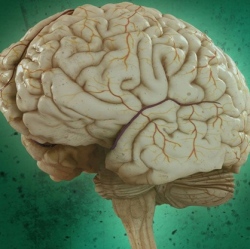
For those with severe motor disabilities, mind-controlled prostheses have long offered a sliver of hope that they might one day be able to regain some semblance of autonomy. While we’ve seen numerous examples of such prostheses over the years, most involve brain surgery and are still not ready for commercialization.
As scientists continue to tinker with neuro circuits, Melbourne-based startup Aubot has skipped past all these complications to launch the Teleport, the world’s first commercially available telepresence robot that can be controlled by thought.
The idea behind Teleport, is simple enough: to allow people to be in two places at once, as is the case with other telepresence devices. While there are numerous corporate and industrial settings in which it can be employed (Aubot’s biggest customers at the moment are corporate companies and museums), some of its most interesting uses lie in the elderly and healthcare sectors.
While studies on mind-controlled telepresence robots have been conducted in the past, what makes the Teleport intriguing is its simplicity. Forget brain surgery, complicated training programs or insurance legalese. All users need is the MindWave, an off-the-shelf brain control interface that costs less than US$100, and they can get the Teleport up and running in just five minutes. Anthony Bartl, a 36-year-old quadriplegic who test drove the robot with the brain-control device, describes the experience as a "real thrill."
"I could go through a museum in America, or wherever; see polar bears in the Arctic," says Bartl, who has been paralyzed from the neck down after being hit by a truck when he was six. "I never really got anything to move before with my brain so that was pretty unbelievable in that sense."
